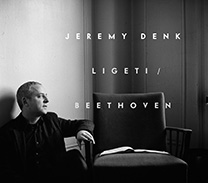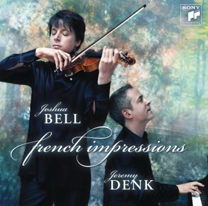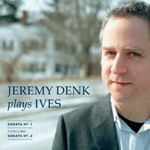After a glittering black-tie gala, I made my way downtown last night to a poser bar. There was only a slight difference between the socialites posing for the cameras and the New York youthful clubsters posing for each other. We were forced to wait in line outside the club, while others (friends of the doorman, regulars, and those too beautiful to wait) went right on in… which made my friend almost insane. I had to calm him. I was oddly patient; standing on 4th Street in my jeans was delicious after a night spent sitting in my tuxedo. Nights in tuxedos are the inevitable price of a career in classical music.
Once inside, my friend headed for the restrooms, and I for the bar in quest of drink. I sat, patiently awaiting my turn to scream “Tanqueray and tonic.” My eyes wandered, and, sitting in a section of the bar that could only be called a “nook,” was an elderly gentleman in a striped cap, speaking animatedly with a swarthy young man. Perhaps this was one of those situations that would be best ignored … but something rang my inner bell. I gave him a long look, and he returned it with a slitting convergence of his eyes–and I realized then that this was one of the old men from the final vignette of Jim Jarmusch’s movie, Coffee and Cigarettes.
His name is Taylor Mead, and not only was he rather an odd sight in this bar of youthful dissipation, but that movie itself is so very surreal, and his totally unique face seemed such a symbol of that surreality, that I felt briefly as though Jarmusch’s artificial world had come to life, and was lurking in the corner of the bar, waiting to swallow everyone.
That particular section of the movie had touched me rather deeply. Two elderly men sit in an strange, large, vaguely menacing, mostly dark, industrial room; a janitor is listlessly sweeping in the background. There is no way to know why they have come to this bleak workingman’s fate, and what dark world surrounds them. They are drinking bad coffee on a break (from what?), and Taylor’s character insists that they pretend for a moment it is champagne. This is, of course, their only escape.
But the essence of this vignette occurs when Taylor cocks his ear to listen, and thereby summons one of my favorite Mahler songs, a song which I obsessed over in my Oberlin days: Ich bin der Welt abhanden gekommen, “I have lost touch with the world.” This auditory hallucination? visitation? is heard by both men (and we as viewers), in fragments… a voice from the other world, utterly foreign to the room we see onscreen. At first nearly inaudible, its volume gradually increases. We want more and more; it blooms, a phrase climaxes; and then, painfully, it vanishes, incomplete. We imagine we are still hearing it even when it is completely silent. This giving and taking away engages a visceral desire for music, like a desire for life itself. This desire can be seen inTaylor’s eyes as he tries to keep hold of this musical “vision,” but eventually it is just gone–he has to give up.
I feel as though I have given up (against my will) many things which I felt since I first heard that song, many feelings which that song virtually embodies. It is a dizzying self-referential dealie: I feel I have lost touch with the song itself, which is about losing touch…
I am surprised that I got up the courage to introduce myself to him (we are back in “reality” at the bar), but I did, and the young man with him was (apparently) an agent trying to sign him on. Taylor was precisely the childlike anomaly that he represented in the movie. He did some delightfully silly gestures when I told him I recognized him from the movie, and said several times “I love feedback.” He told me that Jim Jarmusch loved it when he forgot his lines. He told me about his upcoming show at the Tribeca Film Festival, and his agent quizzed me on the vignette’s dialogue. I said “champagne” in Taylor’s way (French pronunciation), and tried to imitate his “eccch, this coffee’s terrible,” and etc. And he seemed pleased. But I couldn’t stand getting embroiled in too deep a conversation… the risk of disillusionment was too great, like the time I saw a beautiful medieval play where Archangel Gabriel redeems the world, and found the “archangel” puking in an alley later that evening. So, I excused myself.
And this morning, feeling quite out of touch with the world, I came across the following note on my neighbor’s door:
“Last night you woke me again with your noises, screams, bangs on the wall, and LEWD ACTS. This is not a fraternity house, but a place of rest. I will have to call the police…”
And etc. I know the fellow who lives in that apartment. He is a shy, sweet-seeming, 22-year-old former trombonist whose parents came to install him in this ridiculous building. They came and knocked on my door, to get my advice on being a musician in this building, practice hours, and etcetera. I feel sure this boy has done nothing to deserve this note, this intrusion of New York insanity into his existence–just as the men in Jarmusch’s vignette do not deserve to drink bad coffee on a deadline while they dream of the past, Paris, champagne…


